Abstract
1. In earlier studies we have shown that muscle contraction performed as handgrip at constant force, one third of maximal voluntary contraction (MVC), induces a rapid vasodilation in the resting contralateral forearm which in all probability is neurogenically mediated, followed by a relative increase in resistance.
2. The maintenance of contraction at one third MVC for 2 min requires continuously increasing effort because of fatigue, as also evidence by the e.m.g. The biphasic response of the vascular bed may then be related to the increasing intensity of somatomotor activation which is needed to maintain contraction force, or, alternatively, to differences in vasomotor activity on initiation of and continued muscle activity.
3. To elucidate these two possibilities blood flow in the resting forearm was measured during contralateral handgrips at constant maximal effort for 6 min (in which case force will drop) and compared to handgrip at constant force, one third MVC, for 2 min.
4. The flow reaction during prolonged contraction at maximal effort was similar to that induced by contraction at constant force with a marked transient lowering of vascular resistance, although maximal vasodilation tended to be more pronounced and occur earlier.
5. The results indicate that the rapid decrease in vascular resistance is related primarily to the initiation of somatomotor activity, whereas continued muscle contraction produces a relative increase in vasoconstrictor activity irrespective of changes in contraction effort.
Full text
PDF
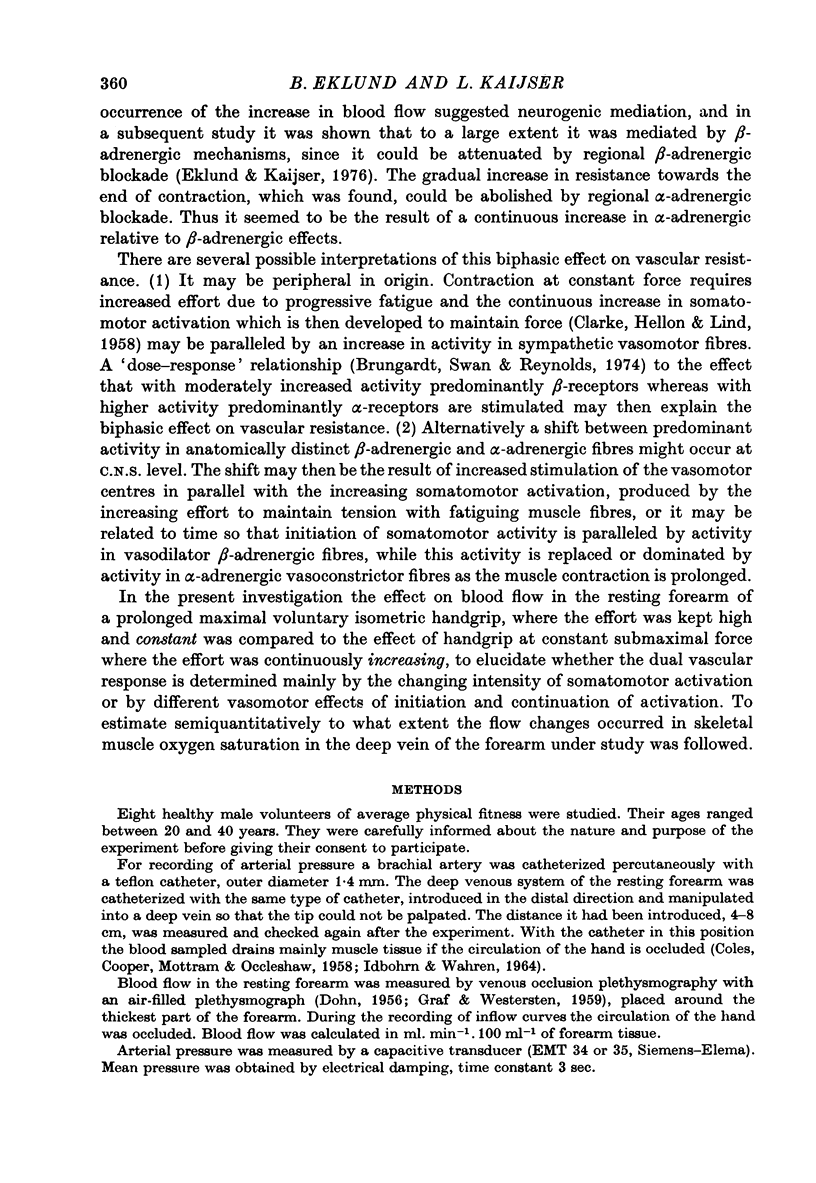
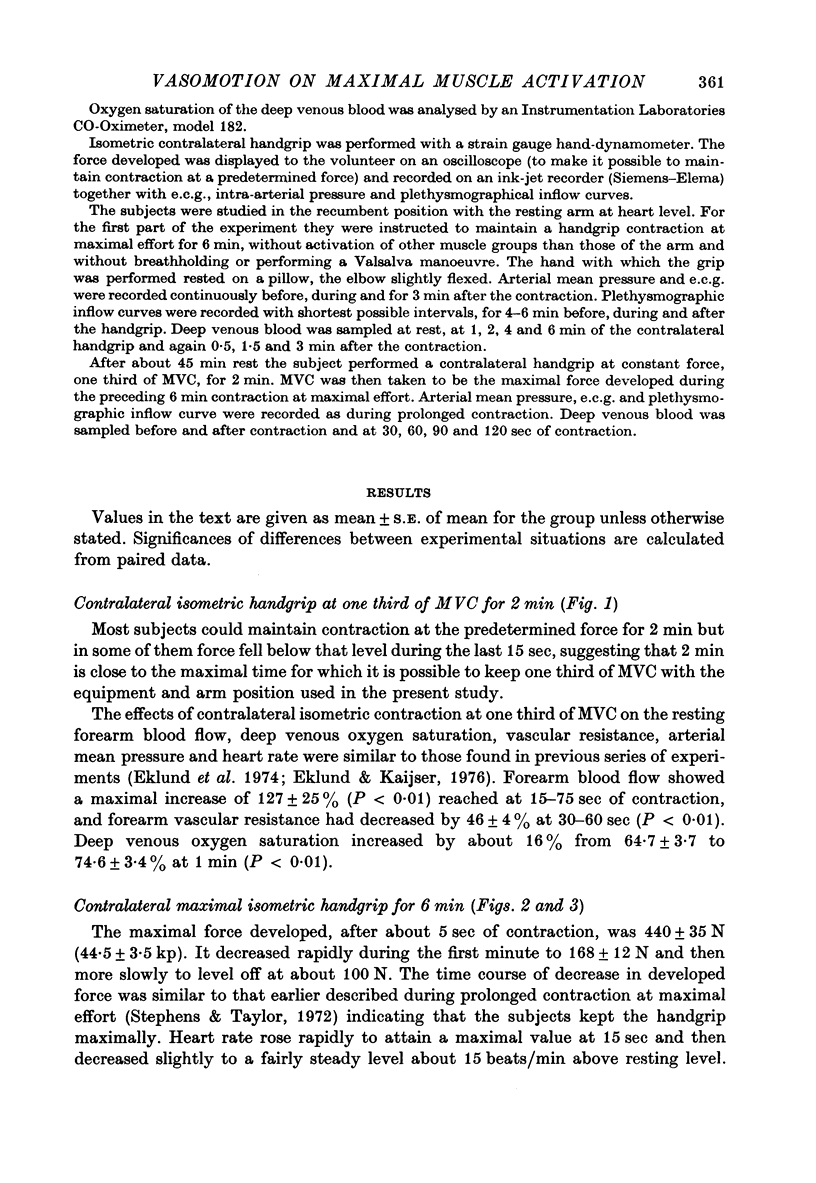

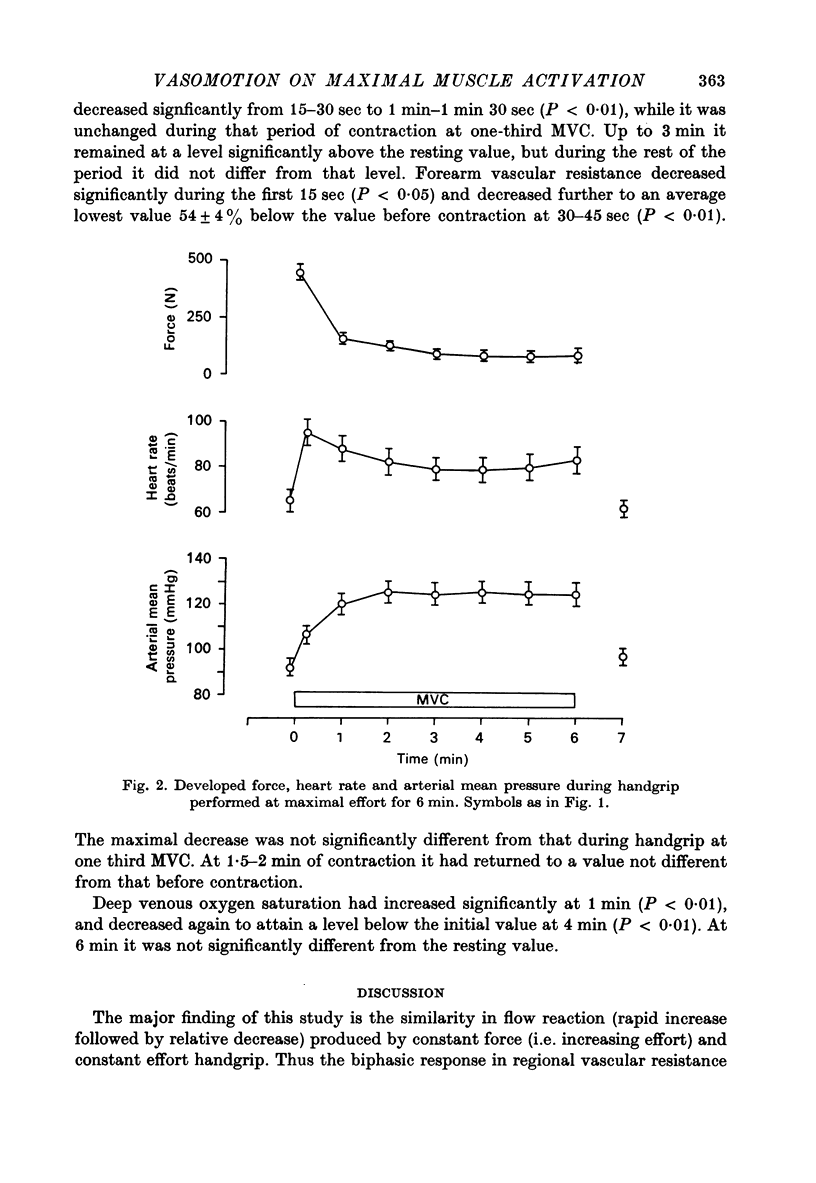
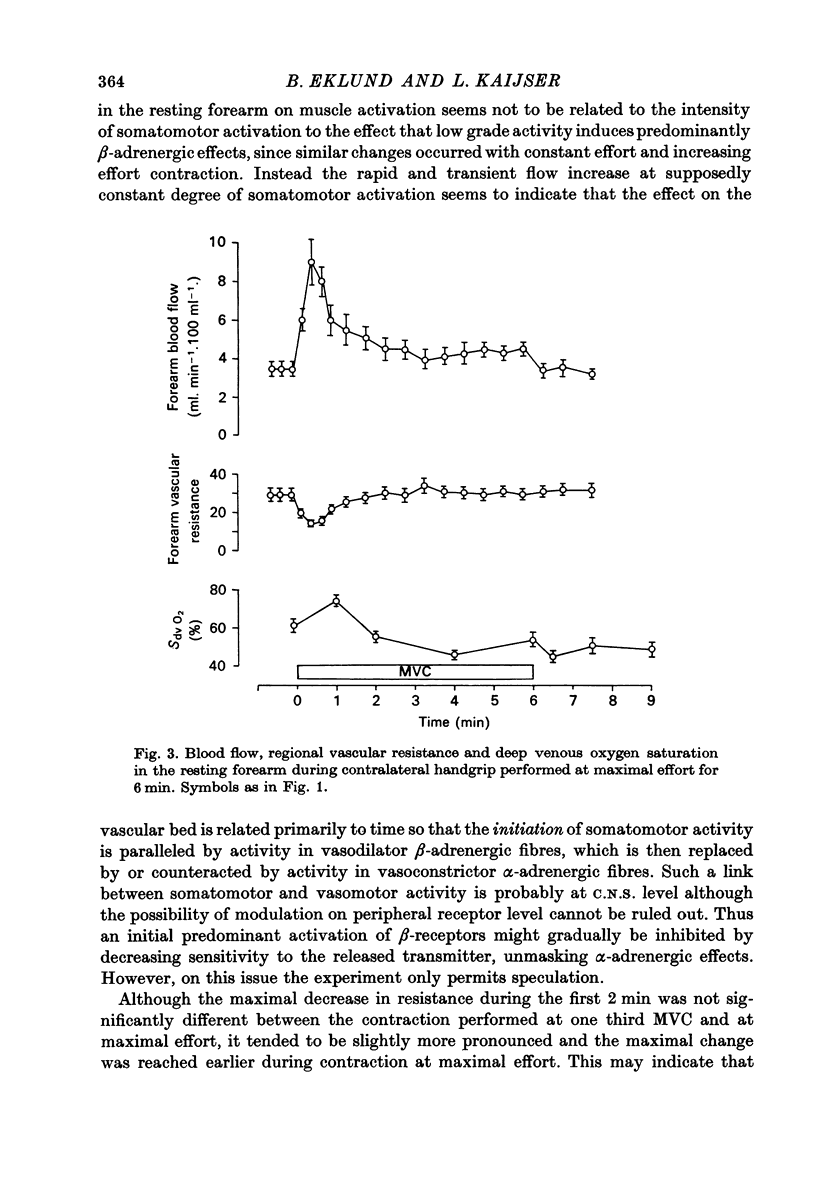

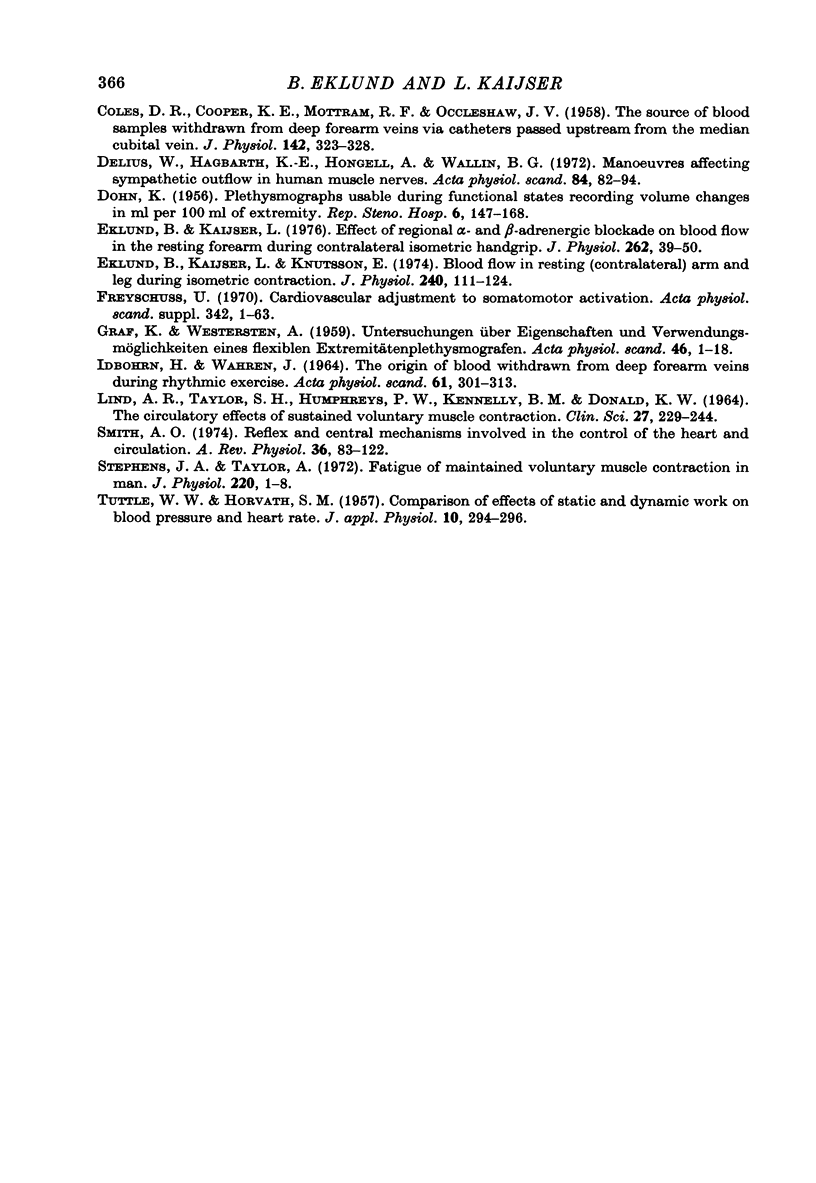
Selected References
These references are in PubMed. This may not be the complete list of references from this article.
- Brungardt J. M., Swan K. G., Reynolds D. G. Adrenergic mechanisms in canine hindlimb circulation. Cardiovasc Res. 1974 May;8(3):423–429. doi: 10.1093/cvr/8.3.423. [DOI] [PubMed] [Google Scholar]
- CLARKE R. S., HELLON R. F., LIND A. R. The duration of sustained contractions of the human forearm at different muscle temperatures. J Physiol. 1958 Oct 31;143(3):454–473. doi: 10.1113/jphysiol.1958.sp006071. [DOI] [PMC free article] [PubMed] [Google Scholar]
- COLES D. R., COOPER K. E., MOTTRAM R. F., OCCLESHAW J. V. The source of blood samples withdrawn from deep forearm veins via catheters passed upstream from the median cubital vein. J Physiol. 1958 Jul 14;142(2):323–328. doi: 10.1113/jphysiol.1958.sp006019. [DOI] [PMC free article] [PubMed] [Google Scholar]
- Delius W., Hagbarth K. E., Hongell A., Wallin B. G. Manoeuvres affecting sympathetic outflow in human muscle nerves. Acta Physiol Scand. 1972 Jan;84(1):82–94. doi: 10.1111/j.1748-1716.1972.tb05157.x. [DOI] [PubMed] [Google Scholar]
- Eklund B., Kaijser L. Effect of regional alpha- and beta-adrenergic blockade on blood flow in the resting forearm during contralateral isometric handgrip. J Physiol. 1976 Oct;262(1):39–50. doi: 10.1113/jphysiol.1976.sp011584. [DOI] [PMC free article] [PubMed] [Google Scholar]
- Eklund B., Kaijser L., Knutsson E. Blood flow in resting (contralateral) arm and leg during isometric contraction. J Physiol. 1974 Jul;240(1):111–124. doi: 10.1113/jphysiol.1974.sp010602. [DOI] [PMC free article] [PubMed] [Google Scholar]
- IDBOHRN H., WAHREN J. THE ORIGIN OF BLOOD WITHDRAWN FROM DEEP FOREARM VEINS DURING RHYTHMIC EXERCISE. Acta Physiol Scand. 1964 Aug;61:301–313. [PubMed] [Google Scholar]
- LIND A. R., TAYLOR S. H., HUMPHREYS P. W., KENNELLY B. M., DONALD K. W. THE CIRCULATIORY EFFECTS OF SUSTAINED VOLUNTARY MUSCLE CONTRACTION. Clin Sci. 1964 Oct;27:229–244. [PubMed] [Google Scholar]
- Stephens J. A., Taylor A. Fatigue of maintained voluntary muscle contraction in man. J Physiol. 1972 Jan;220(1):1–18. doi: 10.1113/jphysiol.1972.sp009691. [DOI] [PMC free article] [PubMed] [Google Scholar]
- TUTTLE W. W., HORVATH S. M. Comparison of effects of static and dynamic work on blood pressure and heart rate. J Appl Physiol. 1957 Mar;10(2):294–296. doi: 10.1152/jappl.1957.10.2.294. [DOI] [PubMed] [Google Scholar]


